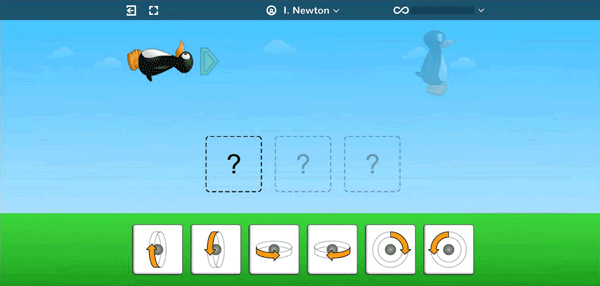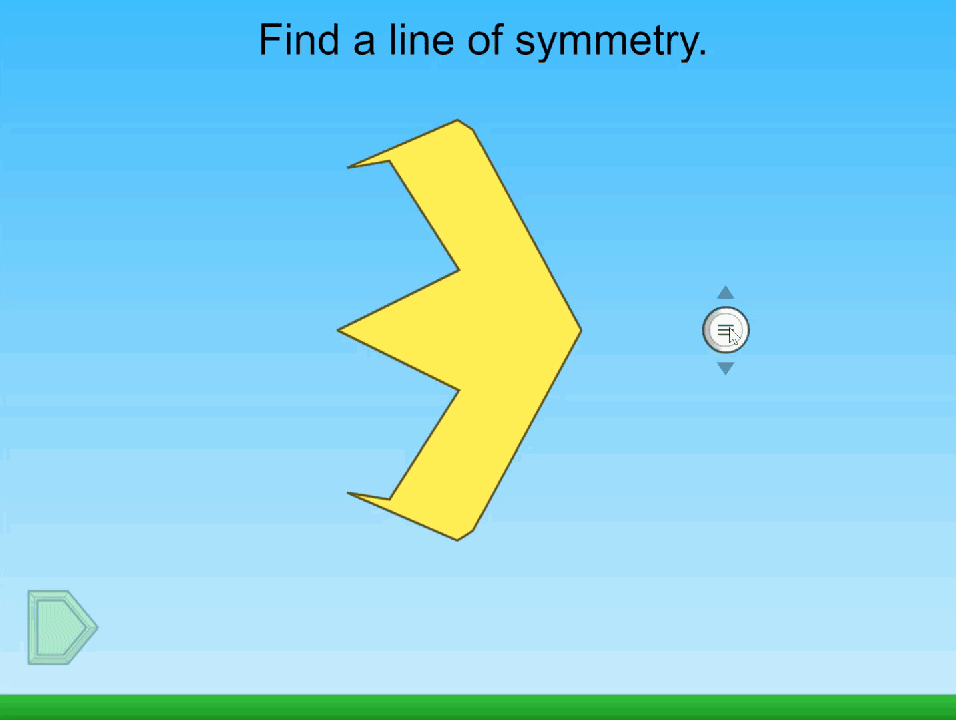This article features contributions from MIND's Education Research Director Martin Buschkuehl.
Having a deep conceptual understanding of math creates the problem-solving foundation that all areas of STEM are built on, and early math skills are powerful predictors of later learning. For over 20 years, MIND has developed and refined our ST Math instructional program to leverage students' spatial-temporal reasoning skills to help them build a deeper understanding of math. Giving students opportunities to develop their spatial skills also provides learning benefits that go beyond math. Research has shown that spatial skills are important for science, technology, and engineering success as well.
A 2009 Vanderbilt University review in the Journal of Educational Psychology looked at over 50 years of longitudinal research on spatial ability, and concluded that “spatial ability plays a critical role in developing expertise in STEM.” In Learning to Think Spatially, the National Research Council (NRC) underscored the importance of spatial skills, stating that “underpinning success in both mathematics and science is the capacity to think spatially.”
When it comes to spatial skills, we know they are trainable. A 2013 meta-analysis of over 200 studies on spatial training concluded that “even a small amount of training can improve spatial reasoning in both males and females, and children and adults.”
Having well-developed spatial skills is very important for advanced STEM coursework, and many STEM-related occupations. But when students don’t get a chance to develop those spatial skills in school, they face challenges at the higher education level that can cause them to leave STEM fields of study. In the same Learning to Think Spatially report mentioned above, the NRC stated that the lack of a K-12 curriculum that leverages spatial thinking is a “blind spot in the American educational system.” That blind spot is hurting STEM studies in higher education, and is negatively impacting the current and future STEM workforce.

Decades of research have shown that many students come to undergraduate work with under-developed spatial skills, and this gap is wider for women. This contributes to retention issues for STEM majors, and to the gender gap in certain STEM careers, like computing and engineering, where women hold 25% and 15% of those jobs, respectively. A 2013 analysis by the US Department of Education’s National Center for Education Statistics found that almost half (48%) of college students who enter into a STEM degree program leave before graduating. The study also found that women were more likely to switch from STEM to non-STEM majors.
To combat these challenges, researchers, educators, universities, and organizations have created training programs to improve spatial skills in undergraduate students, especially in engineering programs. Higher Education Services, for example, is an organization created by Dr. Sheryl Sorby, President of the American Society for Engineering Education. She is a champion for spatial skills education and closing gender gaps. She created the widely-used “Developing Spatial Thinking” curriculum, and continues to conduct research and provides consultation and training around spatial skills education.
Another example is Engage Engineering, a National Science Foundation-funded initiative that began in 2009, aimed at retaining first- and second-year engineering students who might otherwise leave the field of study. The initiative offers a variety of research-based resources for STEM faculty to enhance their existing curriculum.
Finally, the College of Engineering and Applied Science at the University of Colorado Boulder has developed an entire workshop-based curriculum aimed at helping engineering students to develop their spatial skills. Dr. Jacob Segil is one of the architects of that course. He has conducted research investigating the need for, and effectiveness of spatial skills training for undergraduates, and is an outspoken advocate of such training.
“We see spatial visualization skills as an unmeasured quality of our student body even though they are predictive of success in our engineering disciplines. We believe that we need to monitor and promote spatial visualization skills as a part of our drive for equity and inclusion in our college. This effort will ensure that all students will have equal footing to succeed in our engineering and science curriculum.”
—Dr. Jacob Segil, Senior Instructor Mechanical Engineering and Engineering Plus, University of Colorado Boulder
A 2017 study from the University of Toronto looked at a 32-week spatial skills intervention that was implemented in grades K-2. Enrolled students were presented with activities that targeted spatial skills. The activities involved concepts like finding lines of symmetry, proportional reasoning (amount of tiles to fill a space), composition, and visualization. The study found that participating students showed improvement in spatial language, visual-spatial reasoning, 2D mental rotation, and symbolic number comparison.
Similar kinds of spatial skill-building activities are present in Pre-K to 8th grade ST Math games.

In our early learning program, students have the opportunity to develop spatial skills through a combination of physical materials and digital games. Match Position is a spatial reasoning game where children identify the position of an obstacle (above, below, in front, or in back) in relation to the penguin JiJi.
The resources provided to educators include ways to extend the games and activities into the classroom. In this example, the Match Position game becomes a sing along, where children are singing about different shapes and where they are positioned in relation to JiJi and other characters in the Pre-K/TK program.
Additional resources and activities for this program include printables and manipulatives that allow children to further explore concepts and build their spatial skills both physically and digitally.
Another game to foster spatial reasoning skills is Upright JiJi. It is a spatial rotational game that appears in multiple grade levels of content, at varying levels of complexity. In this game, students visualize how to rotate JiJi in a given amount of steps so that JiJi can get across the screen.

Symmetry is another multiple grade level game, and as the name implies, asks students to find a line of symmetry through an object.

These are just three examples, but you can see that these ST Math puzzles allow students to leverage their spatial visualization skills to think through the problem at hand. When students make a choice, they receive immediate, formative feedback that illustrates the result of the action they took. As students work their way through grade level learning objectives, the puzzles help them build a foundational understanding, and then take on increasingly complex problems. Scientific studies have repeatedly demonstrated that this approach to math learning is effective.
Not providing affordances to develop spatial skills in the early classroom is a missed opportunity and may result in students not pursuing a career in a STEM field. There is a demonstrated need for coursework, curriculum, and instructional tools that develop strong math and spatial skills to equip all students for future STEM success. We believe strongly in a spatial training approach, and students across the country using ST Math are not only building a deep conceptual understanding of math, but are also provided with an affordance to develop their spatial skills with every problem they solve.
National Research Council. (2006). Learning to Think Spatially. Washington, DC: The National Academies Press. https://doi.org/10.17226/11019.
Hawes, Z., Moss, J., Caswell, B., Naqvi, S., & MacKinnon, S. (2017). Enhancing Children’s Spatial and Numerical Skills through a Dynamic Spatial Approach to Early Geometry Instruction: Effects of a 32-Week Intervention. Cognition and Instruction, 35(3), 236–264. https://doi.org/10.1080/07370008.2017.1323902
Lauer, J. E., Yhang, E., & Lourenco, S. F. (2019). The Development of Gender Differences in Spatial Reasoning: A Meta-Analytic Review. Psychological Bulletin, 145(6). https://doi.org/10.1037/bul0000191
Rutherford, T., Kibrick, M., Burchinal, M., Richland, L. E., Conley, A. M., Osborne, K., Schneider, S., Duran, L., Coulson, A., Antenore, F., Daniels, A., & Martinez, M.E. (2010). Spatial temporal mathematics at scale: An innovative and fully developed paradigm to boost math achievement among all learners. Presented at the annual meeting of the American Educational Research Association, Denver CO.
Segil, J. L., Sullivan, J. F., Tsai, J. Y., Reamon, D. T., & Forbes, M. H. (2017). Investigation of spatial visualization skills across world regions. 2017 IEEE Frontiers in Education Conference (FIE), 1–5. https://doi.org/10.1109/FIE.2017.8190542
Sorby, S. A. (2009). Educational Research in Developing 3‐D Spatial Skills for Engineering Students. International Journal of Science Education, 31(3), 459–480. https://doi.org/10.1080/09500690802595839
Sorby, S., Casey, B., Veurink, N., & Dulaney, A. (2013). The role of spatial training in improving spatial and calculus performance in engineering students. Learning and Individual Differences, 26, 20–29. https://doi.org/10.1016/j.lindif.2013.03.010
Uttal, D. H., Meadow, N. G., Tipton, E., Hand, L. L., Alden, A. R., Warren, C., & Newcombe, N. S. (2013). The malleability of spatial skills: A meta-analysis of training studies. Psychological Bulletin, 139(2), 352–402. https://doi.org/10.1037/a0028446
Wai, J., Lubinski, D., & Benbow, C. P. (2009). Spatial ability for STEM domains: Aligning over 50 years of cumulative psychological knowledge solidifies its importance. Journal of Educational Psychology, 101(4), 817–835. https://doi.org/10.1037/a0016127

Brian LeTendre was the Director of Impact Advancement at MIND Research Institute. In addition to building thought leadership and brand awareness for MIND, Brian worked cross-functionally internally and externally to amplify MIND's social impact and accelerate our mission. He is an author, podcaster and avid gamer.
Comment